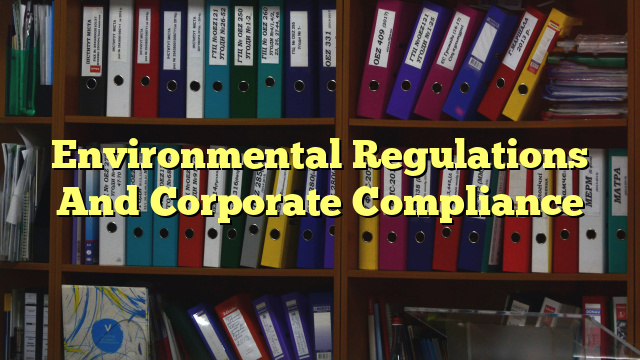Table of Contents
- Regulatory and Corporate Compliance
- Examples of Environmental Compliance
- Purpose of Environmental Regulatory Compliance
- EPA Compliance with Environmental Regulations
- Conclusion
Regulatory and Corporate Compliance
Regulatory compliance and corporate compliance are two distinct concepts, yet they are closely related. Regulatory compliance is the act of following applicable laws and regulations. Corporate compliance is the act of following the rules, regulations, and procedures of a company. Regulatory compliance is often a requirement for corporate compliance.
Regulatory compliance is essential for businesses because it ensures that businesses and organizations are following the laws and regulations of their jurisdiction. This helps to protect businesses from potential legal action. Additionally, regulatory compliance helps to create an ethical and responsible culture within an organization.
It is important to note that regulatory compliance is not the same as corporate compliance. Corporate compliance is a set of standards set by companies that are applicable to all employees. These standards can include, but are not limited to, financial reporting and internal audit procedures, human resources policies, health and safety regulations, and environmental standards.
Examples of Environmental Compliance
Examples of environmental compliance include complying with local, state, federal, and international laws and regulations regarding the environment. This includes laws that regulate air and water pollution, hazardous waste disposal, and the protection of natural resources. Companies must also be aware of any environmental permits or licenses that are required to operate in certain areas.
Examples of corporate compliance in regards to the environment include the implementation of environmental management systems, such as ISO 14001, and the adoption of environmental management practices. Companies may also create environmental policies that are consistent with their mission and vision. These policies may include setting goals for reducing energy and water use, setting waste reduction and recycling targets, and promoting sustainability.
Purpose of Environmental Regulatory Compliance
The purpose of environmental regulatory compliance is to protect the environment and human health by ensuring that companies comply with applicable laws and regulations. This helps to ensure that companies are not harming the environment or contributing to climate change. Additionally, compliance encourages companies to innovate and find new ways to reduce their environmental impact.
By ensuring that companies are in compliance with environmental regulations, it is possible to reduce pollution, minimize environmental damage, and promote sustainable development. Compliance also encourages businesses to consider the environmental impacts of their decisions and operations, helping to protect the environment for future generations.
EPA Compliance with Environmental Regulations
The Environmental Protection Agency (EPA) is responsible for enforcing environmental regulations in the United States. The EPA has various programs and initiatives that are designed to ensure that companies and individuals comply with environmental regulations.
The EPA’s enforcement program involves monitoring and enforcement activities. The EPA monitors companies to ensure that they are in compliance with applicable laws and regulations. If the EPA finds that a company is not in compliance, it can issue a notice of violation and impose penalties. The EPA also works to educate companies about environmental regulations and to encourage them to adopt best management practices.
Conclusion
Environmental regulations and corporate compliance are closely related concepts. Regulatory compliance is the act of following applicable laws and regulations, while corporate compliance is the act of following the rules, regulations, and procedures of a company. The purpose of environmental regulatory compliance is to protect the environment and human health by ensuring that companies comply with applicable laws and regulations. The EPA is responsible for enforcing environmental regulations in the United States, and it has various programs and initiatives designed to ensure that companies and individuals comply with environmental regulations.

